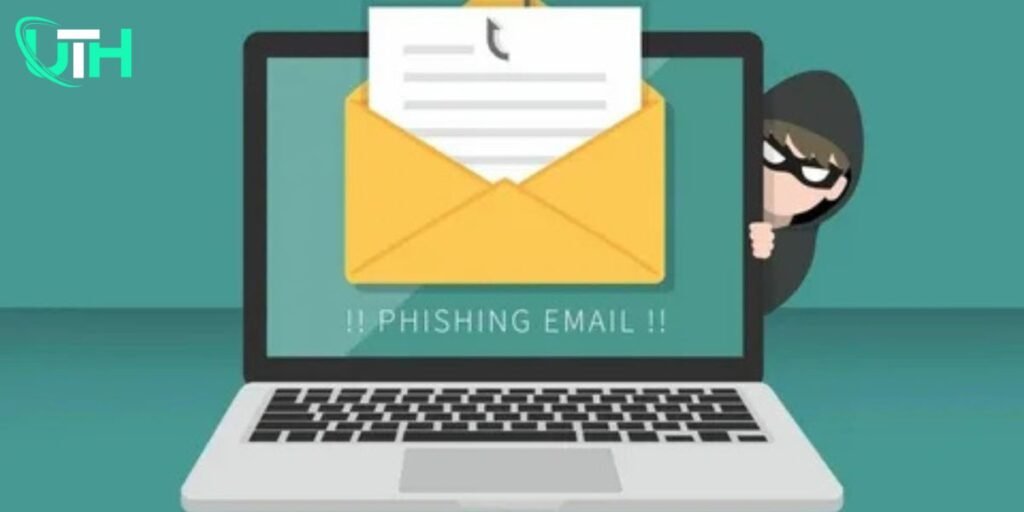Phishing emails are fraudulent messages designed to trick recipients into revealing sensitive information like passwords, credit card numbers, or social security numbers. They often appear to be from legitimate sources such as banks, social media platforms, or online retailers.
Characteristics of Phishing Emails
- Fake Sender Address: Often mimics trusted domains (e.g., @paypa1.com instead of @paypal.com).
- Generic Greetings: Uses terms like “Dear User” or “Dear Customer” instead of your name.
- Urgency or Fear Tactics: claims account issues or security breaches to provoke immediate action.
- Suspicious Links or Attachments: Contains links to fake websites or malicious attachments.
- Requests for Sensitive Information: Asks for credentials, financial details, or personal data.
Goals of Phishing Emails
- Steal login credentials or financial information.
- Spread malware via links or attachments.
- Manipulate victims into unauthorized actions (e.g., wire transfers).
Examples of Phishing Emails
Here are various examples of phishing emails, illustrating different tactics used by cybercriminals to trick users:
1. Fake Account Verification
- Subject: “Verify Your Account Now to Avoid Suspension!”
- Message: “We noticed suspicious activity in your account. Please click here to verify your information.”
- Tactic: Creates urgency to trick users into providing credentials.
2. Fake Payment Confirmation
- Subject: “Payment Successful: Order #12345”
- Message: “Your payment of $499.99 has been processed. If this is a mistake, click here to cancel.”
- Tactic: Exploits fear of unauthorized transactions to prompt action.
3. Prize or Lottery Scam
- Subject: “Congratulations! You’ve Won $1,000,000!”
- Message: “To claim your prize, provide your personal information and pay a small processing fee.”
- Tactic: Lures victims with fake rewards.
4. Tax Refund Scam
- Subject: “Important: Tax Refund Notification”
- Message: “You’re eligible for a refund of $1,200. Click here to claim your refund.”
- Tactic: Uses government-like communication to steal personal details.
5. Job Offer Scam
- Subject: “Immediate Job Opportunity: Work from Home!”
- Message: “We’re hiring remote workers. Submit your details and pay a $50 application fee.”
- Tactic: Pretends to offer a job to collect fees or sensitive information.
6. Delivery Notification
- Subject: “Your Package Could Not Be Delivered”
- Message: “Click here to update your address for delivery.”
- Tactic: Exploits online shopping trends to harvest details.
7. Fake Security Alert
- Subject: “Unusual Login Detected on Your Account”
- Message: “We detected an unauthorized login from a new device. Confirm your identity to secure your account.”
- Tactic: Fakes a security issue to prompt login credential submission.
8. Tech Support Scam
- Subject: “Your Computer is Infected with Viruses!”
- Message: “Call our support team immediately at [number] to fix the issue.”
- Tactic: Tricks users into calling fake tech support for payment or malware installation.
9. Subscription Renewal Fraud
- Subject: “Your Subscription Has Been Renewed”
- Message: “Thank you for renewing your antivirus subscription for $299.99. Contact us to cancel.”
- Tactic: Scares users into contacting fake customer service.
10. Social Media Verification
- Subject: “Your Instagram Account Needs Verification”
- Message: “Click here to verify your account to avoid deactivation.”
- Tactic: Targets social media users to steal login details.
11. Charity Scam
- Subject: “Help Earthquake Victims Today!”
- Message: “Donate now to support relief efforts. Click here to contribute securely.”
- Tactic: Exploits empathy to collect money or credit card information.
12. Banking Scam
- Subject: “Urgent: Your Bank Account is Temporarily Locked”
- Message: “Access your account to unlock it immediately by clicking here.”
- Tactic: Mimics banks to steal account credentials.
13. Fake Payment Request
- Subject: “Please Approve This Payment”
- Message: “You’ve received a payment request for $450. If this is a mistake, click here to cancel.”
- Tactic: Targets users via fake payment requests to steal information.
14. Cloud Storage Scam
- Subject: “Your Dropbox Account is Full”
- Message: “Click here to upgrade your storage or lose access to your files.”
- Tactic: Uses cloud service branding to collect login credentials.
15. Software Update Hoax
- Subject: “Critical Update Required for Your Software”
- Message: “Download the latest update to avoid security risks.”
- Tactic: Encourages downloading malware disguised as updates.
16. Fake Social Media Connection Request
- Subject: “John Smith Wants to Connect with You”
- Message: “Accept this request and view their profile by clicking here.”
- Tactic: Redirects to a fake login page to steal credentials.
17. Invoice Scam
- Subject: “Invoice #45678 Is Due”
- Message: “Please pay the attached invoice promptly to avoid penalties.”
- Tactic: Tricks users into downloading malicious attachments.
18. Cryptocurrency Fraud
- Subject: “Double Your Bitcoin Today!”
- Message: “Send 0.1 BTC to this wallet, and we’ll send back 0.2 BTC.”
- Tactic: Preys on cryptocurrency users with false promises of profits.
19. Streaming Service Phishing
- Subject: “Your Netflix Subscription Has Been Cancelled”
- Message: “Click here to update your payment method and continue enjoying Netflix.”
- Tactic: Mimics streaming services to steal credit card details.
20. Fake COVID-19 Alerts
- Subject: “Urgent: COVID-19 Vaccination Certificate Needed”
- Message: “Click here to download your certificate after verifying your details.”
- Tactic: Exploits public health concerns to gather personal information.
How to Protect Yourself
- Avoid clicking on links or downloading attachments from unknown senders.
- Verify the sender’s authenticity by contacting the organization directly.
- Use email filters and antivirus software to block phishing attempts.
Phishing emails are a common tactic used by cybercriminals, but staying vigilant and using security best practices can help you avoid becoming a victim.
Read More:
How to Report Spoof or Phishing Emails to PayPal
Where do I forward Microsoft phishing emails?
What makes a BEC attack different than a typical phishing email?
